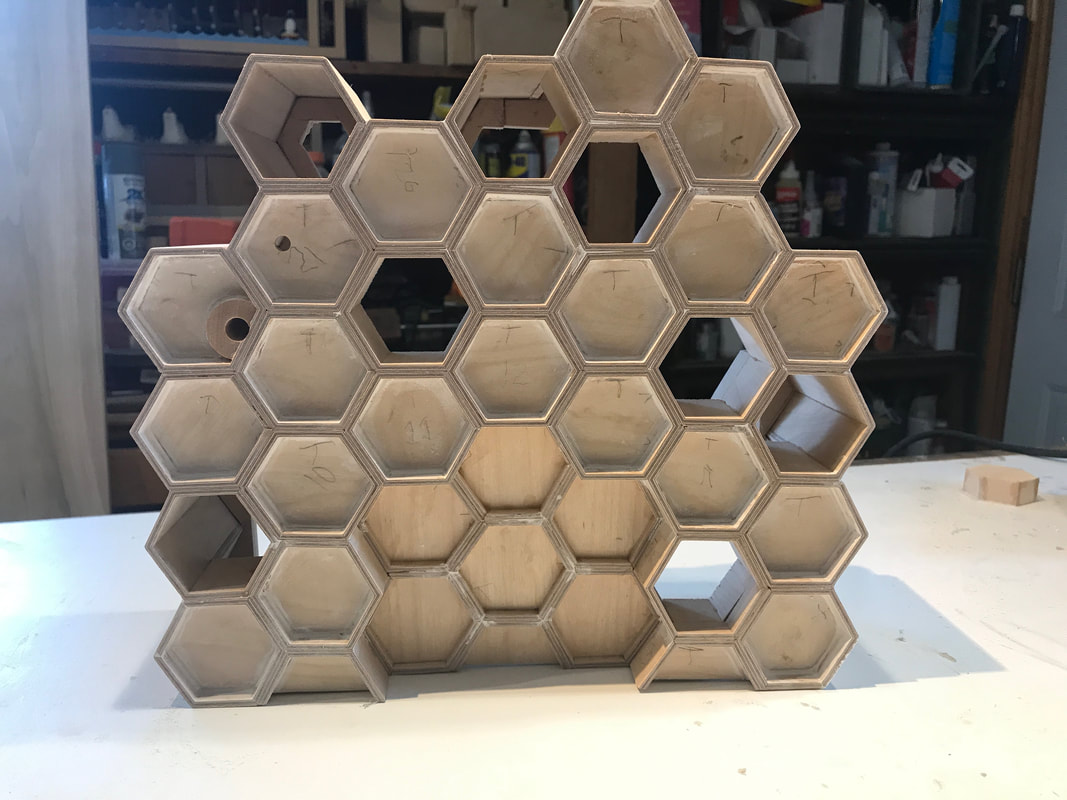|
Well I have some bees, at least bits and pieces of some, so now I need a place for them to hang out, shake rattle, and roll! The most natural thing would be to have them in a honeycomb. How to build one required a little thought. I wanted to have cells of varying depth to accommodate the different bee bodies, and a little alcove in the area in the front of the comb. I set out to make individual hexagonal tubes of varying lengths to stack together to make the comb. This will require some repetitive precision as hexagon shapes are strong and not pliable. Thats why they are used to make many structures like buildings and domes. After some laying out each cell to determine its configuration I set out to make the individual shapes. The cells without bees in them will be only 1/2' deep. The depth of the comb will be 4" which should be enough space to hide the internal mechanism. Many have irregular length sides in order to fit together. I need 29 of them in total! Yes it took a while. I cut the material for the sides from 1/8" birch plywood cutting a 30 degree bevel on both sides. Then I cut the sides to the required length and applied glue, jiggled them into squareness and applied elastics to apply a uniform clamping pressure around the cell body. They are 1-3/4" across the inside of opposite sides. Here's a photo of some of the early assemblies. Well as you might guess the next step is a lot more of the same. Eventually I started clamping them together just to make sure that all 29 cells were as I wanted them. Them I started gluing them together, building the two outer sides from the bottom up and eventually joining them together in the centre. After what seemed like days, it began to fill out until the empty cells were with plywood plugs and the cells for the bees were left open.. The two holes in the cells on the left side are for actuator mechanisms. Below is a view from the back that shows the area where the linkages will run up from the mechanism below.. I put a stiffener around the back edge to add some extra rigidity. The large panel a the bottom is the back of the alcove area on the front. After a quick coat primer paint I can't resist throwing some bees in to see whether it looks like what I imagined it should. I'm satisfied so I keep on going! Its a good thing since I had invested a lot more time on the comb than I thought I would need to. Finally I mounted the comb on a temporary base to stabilize it while I continued to work. Some more paint and and little brighter overspray to provide some shadow for depth and it ready for bee mounting and mechanism linkages. Thats the next blog.!
0 Comments
Leave a Reply. |
Why Automata?Automata is a creative blend of my life interests , engineering, art and woodworking. Archives
July 2022
Categories
All
|








 RSS Feed
RSS Feed